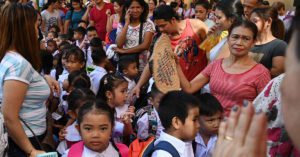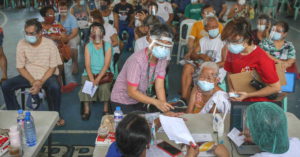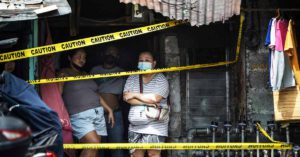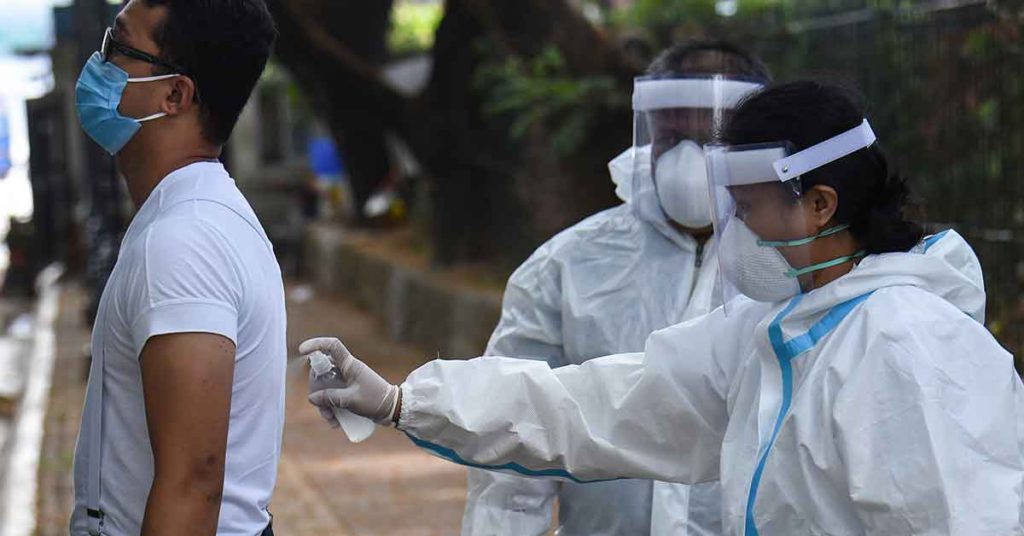
The novel coronavirus, COVID-19, which triggered a global pandemic at a confounding pace has affected the whole world. Following the emergence of the novel coronavirus and its spread outside China, countries like the Philippines are experiencing the deadly virus’ life-threatening and chilling socio-economic impacts.
From the first three imported COVID-19 cases in January, the infection rate in the Philippines has grown rapidly because of localised transmissions totalling 15,588 cases, with 11,069 active cases as of 28 May, 2020. There have been 921 deaths and 3,598 recoveries so far. Among all ASEAN member states, the Philippines occupies third spot in terms of the highest number of COVID-19 cases. In the world, out of the 215 countries affected by the pandemic, the Philippines is placed 43rd as of 28 May, 2020, according to Worldometer, a reference website that provides counters and real-time statistics on diverse topics.
In response to the outbreak, the government of the Philippine launched a multi-sectoral response to the COVID-19 pandemic through its Interagency Task Force (IATF) on Emerging Infectious Diseases chaired by the Department of Health (DOH). For almost three months now, the Philippine government has adopted a suppression strategy through the use of non-pharmaceutical health (NPH) measures (i.e. social distancing, wearing of face masks, quarantines, etc.) to control the spread of the virus in the country. These measures are embodied in the Philippine government’s National Action Plan (NAP) Against COVID-19 strategic framework, which includes strategies such as TASK FORCE T3 (Test, Trace and Treat) and PDITRA or Prevention, Detection, Isolation, Reintegration, and Adopting the New Normal Program.
The NAP is a nationally enabled, local government unit (LGU)-led, people-centred, whole nation strategy to fight the COVID-19 virus. The ultimate aspiration of NAP is to prevent the spread of the disease and to limit its negative impact on the community, the economy, and the security of the country.
After almost three months under different types of lockdowns, Filipinos are asking if indeed the Philippines is winning the war against the novel coronavirus. In an attempt to provide some answers to this question, it is of the essence to take a glimpse at how the Philippines is faring and coping with the following considerations, which are said to be the most critical factors in winning the battle against COVID-19: (a) testing and testing capacity; (b) the reduction of new cases; (c) contact tracing; (c) treatments; (d) securing a vaccine for the people; and (e) securing, enhancing and augmenting of the healthcare facilities and resources of the country.
These factors are the game changers in the nation’s crusade against the novel coronavirus. Success in these considerations will assist in the smooth transition towards the new normal and will serve as a conduit to the opening of the country’s economy.
Testing And Testing Capacity
To date, the government has strengthened its expanded targeted testing capacity. From a single national reference laboratory – the Research Institute of Tropical Medicine (RITM) – in March, the country now has 43 accredited COVID-19 testing laboratories as of 27 May, 2020. The target of the government is to reach 66 laboratories by 31 May, 2020. The testing capacity of the country has also reached 32,100 tests per day as of 24 May, 2020, using Real-Time Reverse Transcription-Polymerase Chain Reaction (RT-PCR) machines as the gold standard, surpassing its original target of 30,000 tests per day by 30 May, 2020. This is so far six times more than the 5,000-testing capacity a month ago and is already on par with the testing capacity in more advanced countries like South Korea. The government has also ordered and purchased two million immunoglobulin IgM IgG antibody test kits to boost further the testing capacity of the country.
To expand access to testing, the DOH has expedited the establishment of Mega Swabbing Sites. As a result, the backlog of COVID-19 testing has already gone down from 5,700 to 3,683 this week (25-29 May, 2020).
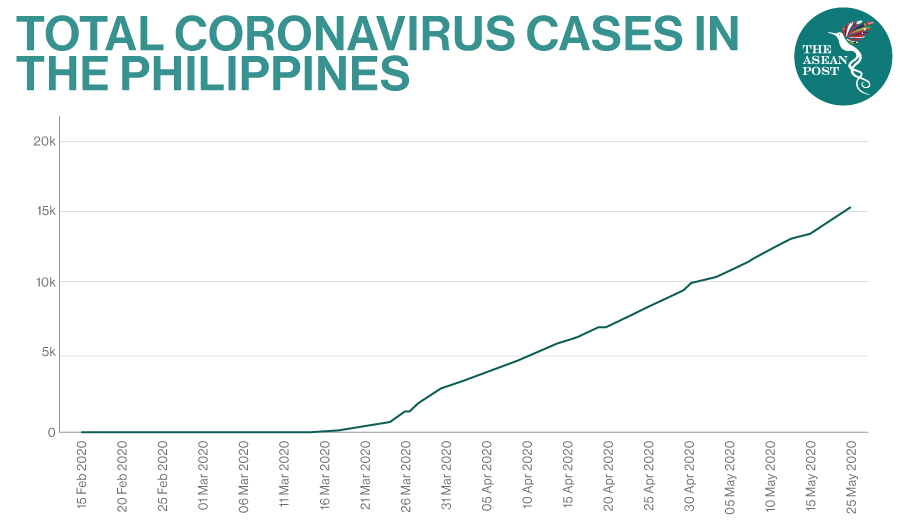
In this regard, the country has achieved relative success in strengthening its testing capacity. It can also be observed that the expanded targeted testing program of the country had gained some traction and footing compared to over a month ago. However, the fundamental challenge at the moment is to maximise the more than 30,000 daily testing capacity of the country and to have 30,000 actual daily tests. This has not been achieved yet. For instance, on 27 May, 2020, only 8,496 tests were conducted; way below the 30,000-testing capacity of the country. This is a serious challenge for the DOH and Sec. Duque to address. In terms of total tests conducted, as of 27 May, 2020, a total of 328,819 tests have been conducted on 297,358 unique individuals.
Reduction In New Cases
Based on reports, an average of 250 new confirmed cases in every 11,509 tests is being tallied by DOH. In March and April, the positive cases have reached 13%, however, the cases had gone down to 8% this May. It was also reported that the case doubling time has been lengthier compared before that it was shorter (about two days). Now it takes around more or less five (5) days before the case of infections doubles. For Metro Manila, it takes more or less a month for the number of COVID-19 cases to double. The government also claimed that the COVID-19 epidemiological curve has plateaued already, and probably this can be attributed to the quarantine measures implemented by the government. However, despite the stern and tough quarantine measures imposed by the government, the country’s COVID-19 infection rate hasn’t dropped yet and descended to below 100 cases daily, which is a much more promising figure, and something that all Filipinos and even the government yearn to see in the coming days, as the country is easing-up the stringent quarantine measures, and edges towards the “new normal”.
Contact Tracing
The contract-tracing program in the Philippines, which is supposedly the strongest link to the surveillance efforts of the DOH, is thus far the weakest link in the whole COVID-19 response of the country. Many observers have claimed that the DOH’s contact tracing efforts are almost non-existent. The country’s contract tracing initiative is plagued by underlying issues such as limited contact tracers. The DOH at the moment has a shortage of around 94,000 COVID-19 contact tracers to attain the benchmark target ratio of one contact tracer per 800 people. The country thus far has 38,000 contact tracers only. Hence, if the Philippines is to succeed in its fight against the COVID-19 virus, it is imperative that it prioritises contact tracing and ensures that it is done in a manner that is cost-effective and cost-efficient. In this regard, the government through the DOH has introduced an emergency hiring program for contact tracers. It plans to hire 136,000 contact tracers en masse to boost the efforts of the government in stopping the transmission of the virus while providing jobs to around 1.2 to 1.5 million people who are temporarily out of work.
Treatments, Vaccines, Recoveries, And Fatalities
It is noteworthy to mention that there is a steady and constant decline in the number of fatalities and a steady increase in the number of recoveries. This downward trend in fatalities and an upward trend in recoveries is also the case among health workers. From double-digit deaths a month ago, it was reduced to single-digit this May. The government is aiming to reduce fatalities to zero per day. On the other hand, the number of recoveries has climbed to triple-digits in May, from single-digits in March. To date, the highest number of single-day recoveries was recorded on 13 May, 2020, at 145.
To sustain this trend, the Philippines has participated in the World Health Organization (WHO) Solidarity Trials with 24 hospitals currently participating with 16 of them actively recruiting participant-patients. There are 157 participant-patients in the clinical trials. The country is also participating in the Avigan Trials. The Philippines will also participate in clinical trials for COVID-19 vaccines with the Department of Science and Technology (DOST) taking the lead. President Duterte has also authorised the creation of research centres to initiate vaccine development.
Healthcare System Capacity Augmentation
As of 21 May, 2020, there are 1,905 COVID referral and accepting hospitals nationwide, with 24 designated DOH COVID-19 referral hospitals and 50 other DOH accepting hospitals. As of 27 May, 2020, the total capacity dedicated to COVID-19 patients is 13,557 beds, while the dedicated beds for COVID-19 cases in Local Isolation and General Treatment Areas for COVID-19 Cases (LIGTAS-COVID Centers) – these are community-managed facilities across the country dedicated to quarantine or isolation of suspected COVID-19 cases – is 51,526.
Additionally, there is a total of 1,348 beds in the five mega LIGTAS COVID facilities located both, in the National Capital Region (NCR) and Region III (Bulacan). Also, as of 20 May, 2020, the Bureau of Quarantine (BOQ) is manning a total of 70 quarantine (47 are hotels or similar facilities, while 23 are cruise ships) facilities catering to 11,109 repatriates. The Department of Education (DepEd) has approved the use of 2,852 school facilities for COVID-19 related concerns. There are also 3,146 “We Heal As One” Covid-19 centres built nationwide that can accommodate around 57,773 persons under monitoring, suspected, probable, and confirmed cases.
The government has also augmented the number of mechanical ventilators in various hospitals across the country. As of 27 May, 2020, the total number of mechanical ventilators is 1,964. The government has also stabilised the supply and demand for personal protective equipment (PPE) in the country. Likewise, 6,546 slots for emergency hiring of Health Human Resource (HRH) was approved by the DOH. Out of this figure, 2,536 HRH have been hired and apportioned across the country.
In the short span of nearly two months (April to May), the government was able to augment and expand the healthcare system capacity of the country. As a result, hospitals can now accommodate a greater number of confirmed COVID-19 patients who need immediate medical attention compared to two months ago. The healthcare system of the country can now handle surge capacity including management of cases needing isolation, quarantine, and hospitalisation.
Conclusion
Is the Philippines winning the war against COVID-19? It is too early to say. But one thing is certain though, the country is on the right track and is well guided in its response against the deadly virus.
Are the country’s responses to COVID-19 perfect? Of course not. Though far from perfect, nonetheless, the country has achieved relative successes in its response to the COVID-19 outbreak within a short period, and these responses are continuously gaining traction despite the many challenges along the way.
The Philippine response to the virus – though laden with its own set of shortcomings – has saved tens of thousands of Filipino lives. As the whole country wrestles with COVID-19, the government is presented with lots of opportunities and plenty of room to improve its efforts in the war against the virus.
Are the country’s responses to the COVID-19 pandemic faced with major challenges? Yes of course. One of the many challenges at the moment is to ensure that all health-related and quarantine protocols are maintained until there’s the availability of a vaccine, and to avoid a relapse if these interventions are relaxed.
In what ways can the Philippines further improve its chances of winning the war against COVID-19? The boxing match against COVID-19 is not just a battle for the government of the Philippines, but a collective fight for every Filipino. Therefore, the cooperation, commitment and discipline of every single Filipino in respecting and following the mandated precautionary measures prescribed by the government such as staying at home, social/physical distancing, wearing face masks, washing of hands, and the like, are at the end of the day, the most important determining factors in the country’s battle against COVID-19.
Source: The ASEAN Post
https://theaseanpost.com/article/philippines-winning-its-covid-19-fight

